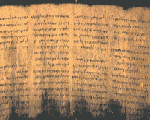




Use of environmental modification techniques for hostile purposes does not play a major role in military planning at the present time. Such techniques might be developed in the future, however, and would pose a threat of serious damage unless action was taken to prohibit their use. In July 1972 the U.S. Government renounced the use of climate modification techniques for hostile purposes, even if their development were proved to be feasible in the future.Both the U.S. Senate and the House of Representatives held hearings, beginning in 1972, and the Senate adopted a resolution in 1973 calling for an international agreement "prohibiting the use of any environmental or geophysical modification activity as a weapon of war...." In response to this resolution, the President ordered the Department of Defense to undertake an in-depth review of the military aspects of weather and other environmental modification techniques. The results of this study and a subsequent interagency study led to the U.S. Governments decision to seek agreement with the Soviet Union to explore the possibilities of an international agreement.
During the summit meeting in Moscow in July 1974, President Nixon and General Secretary Brezhnev formally agreed to hold bilateral discussions on how to bring about "the most effective measures possible to overcome the dangers of the use of environmental modification techniques for military purposes." Three sets of discussions were held in 1974 and 1975, resulting in agreement on a common approach and common language.
In August 1975, the chief representatives of the U.S. and the Soviet delegations to the Conference of the Committee on Disarmament (CCD) tabled, in parallel, identical draft texts of a "Convention on the Prohibition of Military or any Other Hostile Use of Environmental Modification Techniques."
The Convention defines environmental modification techniques as changing -- through the deliberate manipulation of natural processes -- the dynamics, composition or structure of the earth, including its biota, lithosphere, hydro-sphere, and atmosphere, or of outer space. Changes in weather or climate patterns, in ocean currents, or in the state of the ozone layer or ionosphere, or an upset in the ecological balance of a region are some of the effects which might result from the use of environmental modification techniques.
Intensive negotiations held in the CCD during the spring and summer of 1976 resulted in a modified text and, in addition, to understandings regarding four of the Treaty articles. These were transmitted to the U.N. General Assembly for consideration during the fall session.
Article I sets forth the basic commitment: "Each State Party to this Convention undertakes not to engage in military or any other hostile use of environmental modification techniques having widespread, long-lasting or severe effects as the means of destruction, damage or injury to any other State Party." An understanding defines the terms "widespread, long-lasting or severe." "Widespread" is defined as "encompassing an area on the scale of several hundred square kilometers"; "long-lasting" is defined as "lasting for a period of months, or approximately a season"; and "severe" is defined as "involving serious or significant disruption or harm to human life, natural and economic resources or other assets."
With regard to peaceful uses of environmental modification techniques, the convention provides that the parties shall have the right to participate in the fullest possible exchange of scientific and technological information.
In addition to the provision for mutual consultation regarding complaints and for resource to the Security Council, the revised draft establishes the framework for a Consultative Committee of Experts, which would meet on an ad hoc basis when so requested by a party, in order to clarify the nature of activities suspected to be in violation of the convention. Responding to the suggestion of many delegations, the revised text incorporates a provision for periodic conferences to review the Conventions operation.
During the 1976 fall session, the U.N. General Assembly held extensive debate on the draft Convention, including several resolutions relating thereto. On December 10, the General Assembly adopted a resolution by a vote of 96 to 8, with 30 abstentions, which referred the Convention to all member nations for their consideration, signature, and ratification, and requested the U.N. Secretary-General to open the Convention for signature.
The U.N. Secretary-General officiated at the signing ceremony in Geneva on May 18. The United States joined 33 other nations in signing the Convention. The Convention entered into force on October 5, 1978, when the 20th state to sign the Convention deposited its instrument of ratification. President Carter transmitted the Convention to the Senate on September 22, 1978.
The Senate gave its advice and consent to ratification on November 28, 1979, by a vote of 98-0. The President ratified the Convention December 13, 1979. The Convention entered into force for the United States on January 17, 1980, when the U.S. instrument of ratification was deposited in New York.
